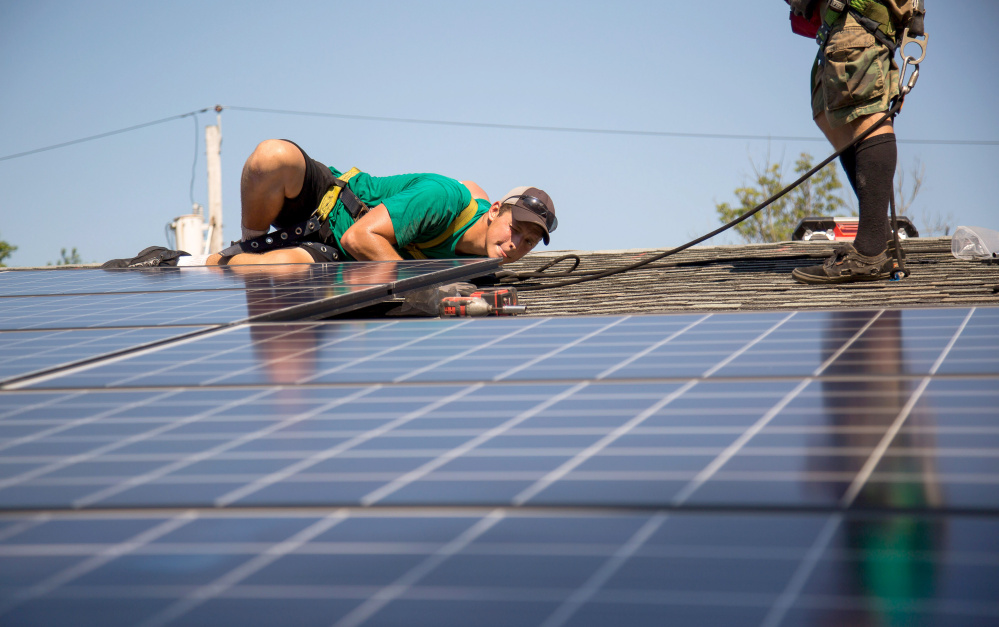Rooftop solar is casting a $2 billion shadow over power generators across the eastern United States.
With more than a million U.S. houses set to have solar panels by the end of next month, grid managers serving the eastern U.S. plan to cut the amount of electricity they buy from conventional plants by about 1,400 megawatts, starting in 2019, according to industry consultant ICF International Inc. That’s enough juice to power about 780,000 households.
The result could be as much as $2 billion in lost revenue for generators that are already reeling from lower demand, tight environmental regulation and depressed prices. Power producers including NRG Energy Inc. warn that the growing reliance on solar may curtail investment in conventional power plants, threatening the reliability of the U.S. electricity system. That’s already happened in Germany, they say, citing plans by EON and RWE to scrap existing or planned plants.
The decision “creates a risk you are going to repeat in the United States what’s happening in Germany,” said George Katsigiannakis, a principal at Fairfax, Virginia-based ICF, in a telephone interview. “The result of that is going to be that generating resources, reliable generating resources, don’t make their money and they retire.”
Under “Energiewende,” a German transition plan designed to lessen fossil fuel use, about 30 percent of the country’s power is now generated by renewables, sending power prices to their lowest levels in more than a decade. That spurred EON’s Uniper unit to seek closure of two gas-fired units in Bavaria, and Essen-based RWE to scrap plans to start up its coal-fired Westfalen-D plant, valued at $1.1 billion.
While EON didn’t respond to a phone call and e-mail seeking comment, an RWE spokeswoman said “nearly all of our stations are in the red” as a result of low prices.
“The considerable drop in wholesale electricity prices and the difficult political environment are weighing on us,” Vera Buecker said in an e-mailed response to questions. “Many power plants are hardly being used and cannot cover their costs.”
This year, for the first time, operators of regional power grids such as PJM Interconnection, which serves more than 61 million customers ranging from Washington to Chicago, and ISO New England Inc., have included solar growth in their estimates for 2019, spurring more national debate on how the nation’s electrical system will be financed and managed moving forward.
Send questions/comments to the editors.



Success. Please wait for the page to reload. If the page does not reload within 5 seconds, please refresh the page.
Enter your email and password to access comments.
Hi, to comment on stories you must . This profile is in addition to your subscription and website login.
Already have a commenting profile? .
Invalid username/password.
Please check your email to confirm and complete your registration.
Only subscribers are eligible to post comments. Please subscribe or login first for digital access. Here’s why.
Use the form below to reset your password. When you've submitted your account email, we will send an email with a reset code.